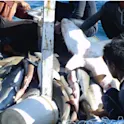
Life sciences
25 Apr 2016
Study shows attitude makes a champion
By K.E.D. Coan, Frontiers science writer On the path to greatness, why do some become champions while others fall short? Coaches, parents, and aspiring athletes have all sought to answer this question. In their search for the optimal path to greatness, some believe that the path should be smoothed of all obstacles, while others say that such challenges are instrumental to talent development. Now, a recent study suggests that what really distinguishes champions is how they face and overcome such obstacles. “We’ve found that there are universal psychological characteristics amongst those who are aspiring to get to the top,” says Professor Dave Collins, lead author of the study, as well as Chair and Director of the Institute of Coaching and Performance at the University of Central Lancashire. “We have a good idea of what makes people excellent and how we can help them reach peak performance.” By interviewing athletes from varied sports such as soccer, rowing, skiing, and combat sports, Collins and his collaborators sought to find distinguishing characteristics between the best of the best, the good, and those that didn’t quite make the cut. For each participant, they collected information about career trajectory, perceived challenges and the participant’s reactions […]













